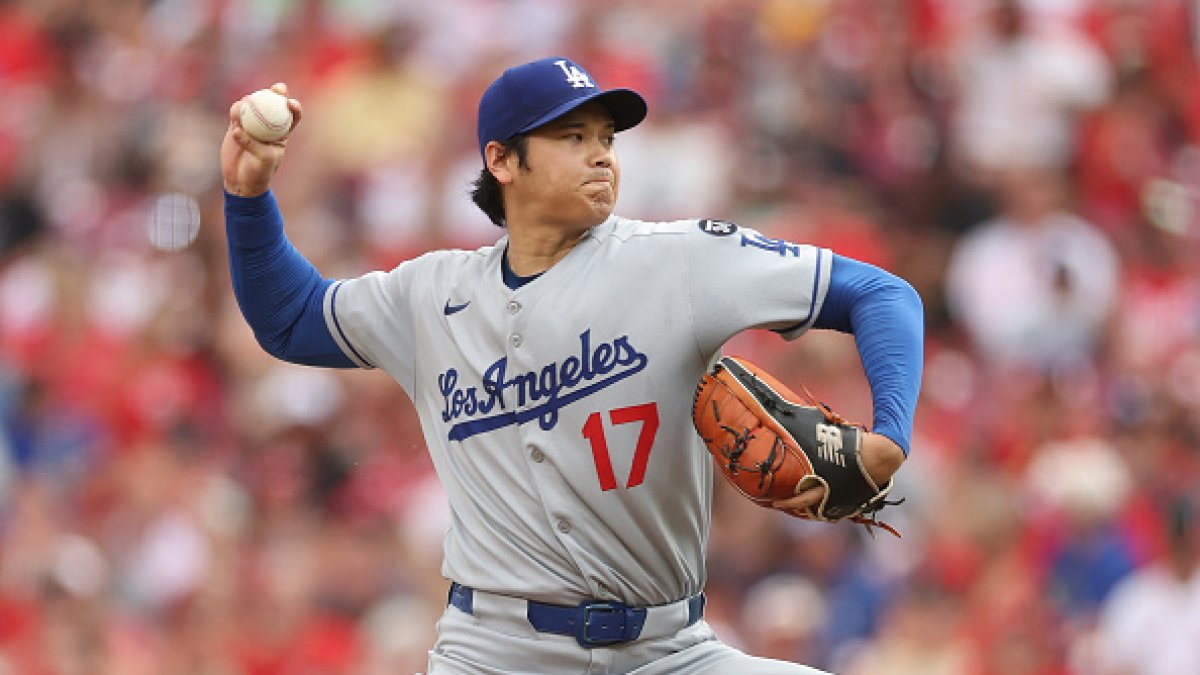The anticipation inside Great American Ballpark on Wednesday night was electric. For fans in Ohio, it’s rare they get to see two-way sensation Shohei Ohtani doing what he does best: hitting and pitching in the same game.
Ohtani was cruising through his first three innings, but the mood shifted dramatically by the fourth inning as the crowd went from hopeful to hushed.
In what was his seventh start as a pitcher for the Los Angeles Dodgers and his most turbulent outing since returning to the mound, Ohtani showed cracks in the armor that had, until now, looked nearly indestructible.
Ohtani surrendered a season-high two earned runs on five hits, with two walks, and just four strikeouts across three-plus innings in a concerning performance against the Cincinnati Reds.
It wasn’t just the runs that raised concern—it was the way it all unraveled in the fourth inning.
Ohtani started strong, lighting up the radar gun with a 101 MPH fastball, mixing in his sinker, splitter, and sweeper. But by the fourth inning, he began to lose feel for the strike zone.
After surrendering a leadoff single to Noelvi Marte, Ohtani bounced two wild pitches in a row, both on his sinker, as they sailed past catcher Will Smith, moving Marte to third base and scoring position.
He walked Tyler Stephenson on four pitches, and then his first two pitches to Spencer Steer were yanked far to the left of home plate, prompting manager Dave Roberts and head athletic trainer Thomas Albert to come out to the mound.
The moment felt ominous.
Ohtani stood tall but quiet, glove resting on his hip, as the conversation played out in quick, hushed tones. After a few nods, Ohtani handed the baseball to Roberts and made the slow walk back to the dugout where he immediately disappeared down the steps and into the tunnel.
It was a rare and unsettling sight in any circumstance, but especially when it involves a player of his magnitude.
It marked the first time Ohtani pitched into the fourth inning since returning from his second Tommy John surgery, a small milestone in an otherwise frustrating outing. But that moment—being pulled during an at-bat, after erratic pitches and signs of fatigue—set off alarm bells not just in the stadium, but across the baseball world.
The good news? He stayed in the game as the designated hitter, offering a silver lining to what might have otherwise felt like a gut punch to Dodgers fans. If there were any immediate physical concerns, they weren’t serious enough to keep him out of the lineup. Still, Ohtani’s departure sparked speculation—was it precautionary, mechanical, cramping?
Thankfully, it was the latter.
Dodgers say Shohei Ohtani left the game with cramps. We can all breathe a sigh of relief.
— Michael J. Duarte (@michaeljduarte) July 31, 2025
The team is expected to monitor him closely, but an off day on Thursday comes at the perfect time, giving Ohtani a much-needed day off. Given Ohtani’s value—on the field, at the plate, and in the hearts of an entire franchise—it’s hard to overstate how high those stakes truly are.
Ohtani finished the night throwing 51 pitches, just 32 for strikes. For a man known for command and poise, that stat alone speaks volumes.
In his previous six starts for Los Angeles, the Japanese phenom had looked every bit like the unicorn the Dodgers paid for: dominant on the mound, patient and powerful at the plate, and poised under the bright lights. Wednesday, though, was a reminder of how human even baseball’s most mythical figure can be, especially in the blazing summer heat and humidity of middle America.
With Blake Snell set to return to the Dodgers starting rotation on Saturday against the Tampa Bay Rays, Los Angeles will go with a six-man rotation moving forward. That should give Ohtani plenty of rest before his next start which will likely come at Dodger Stadium against the Toronto Blue Jays next weekend.
Until then, Dodgers fans will hold their breaths for the unicorn to return to his dominant self.
